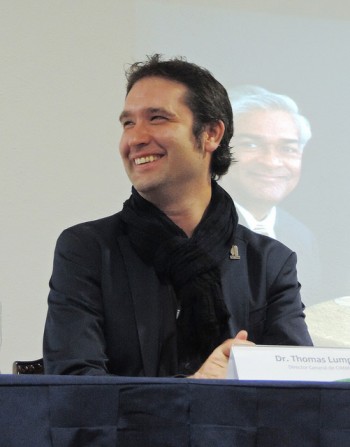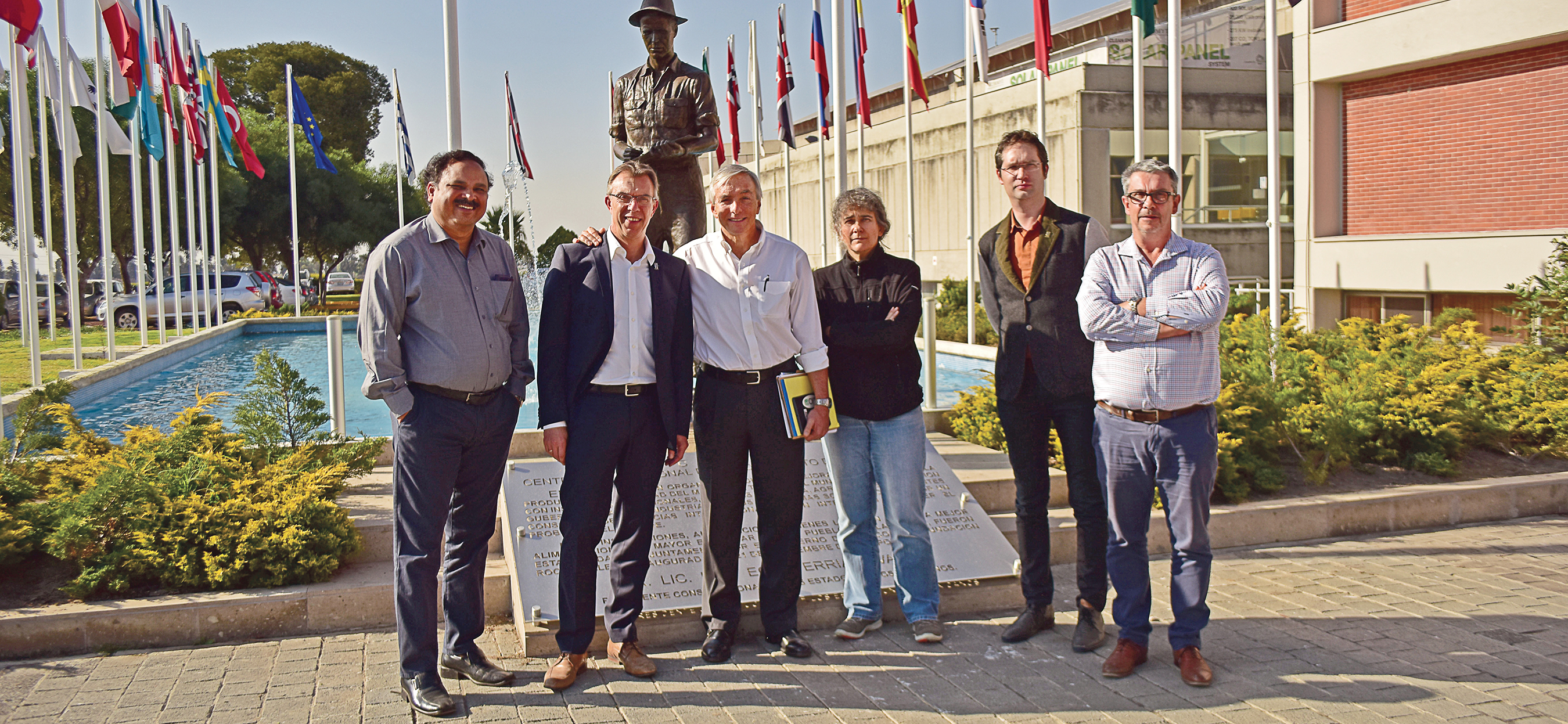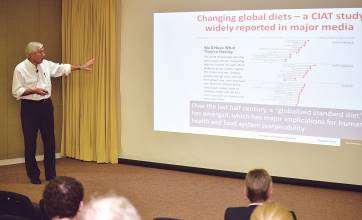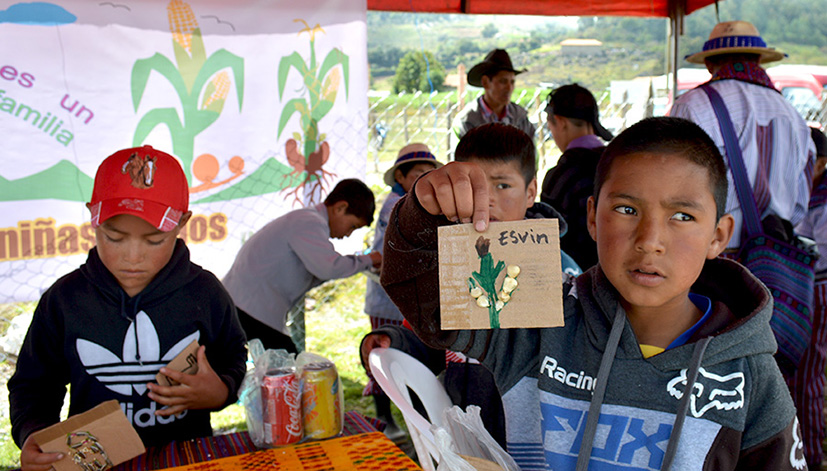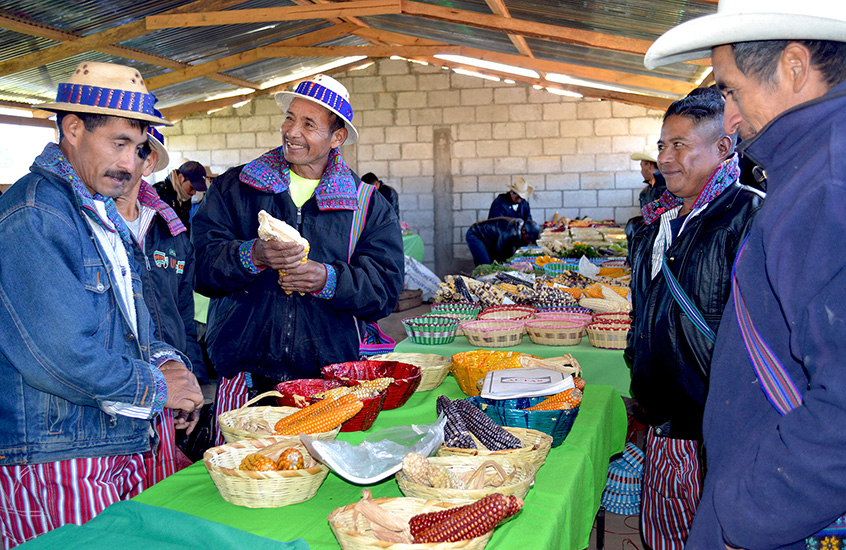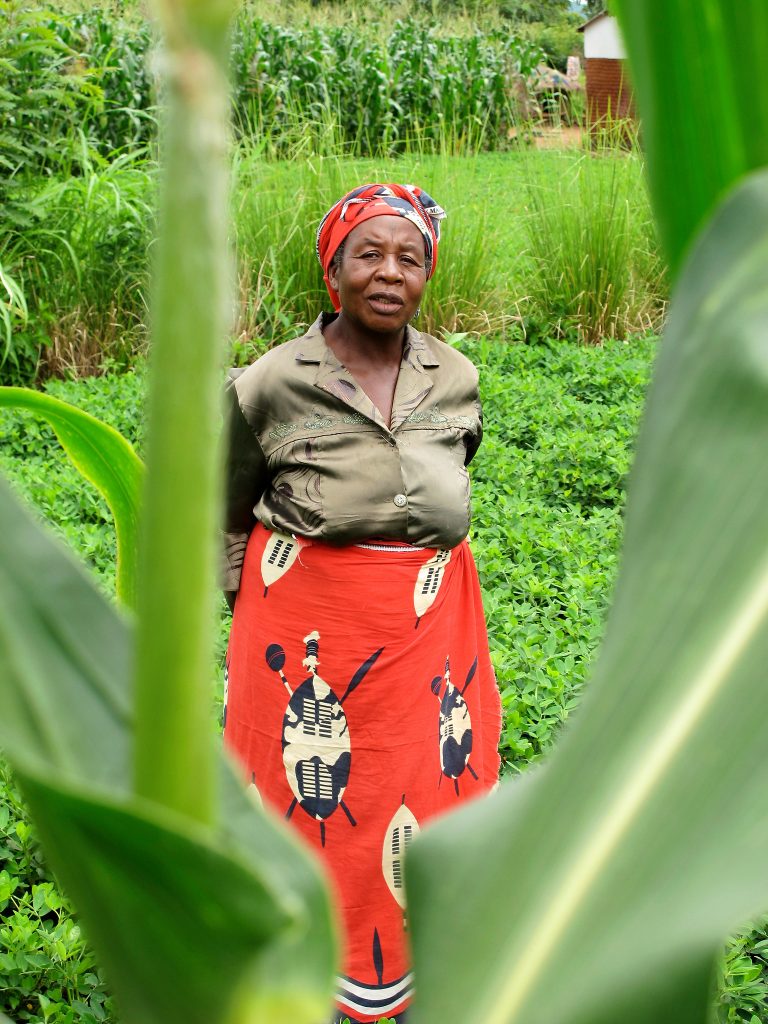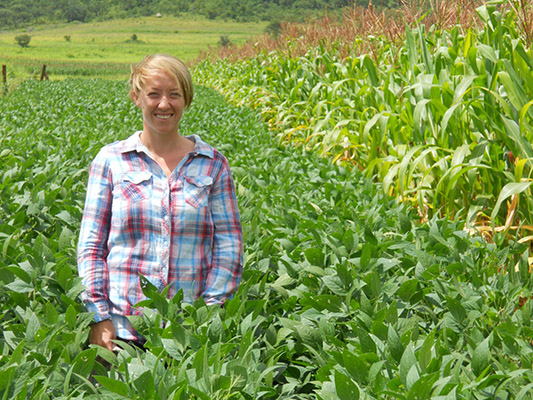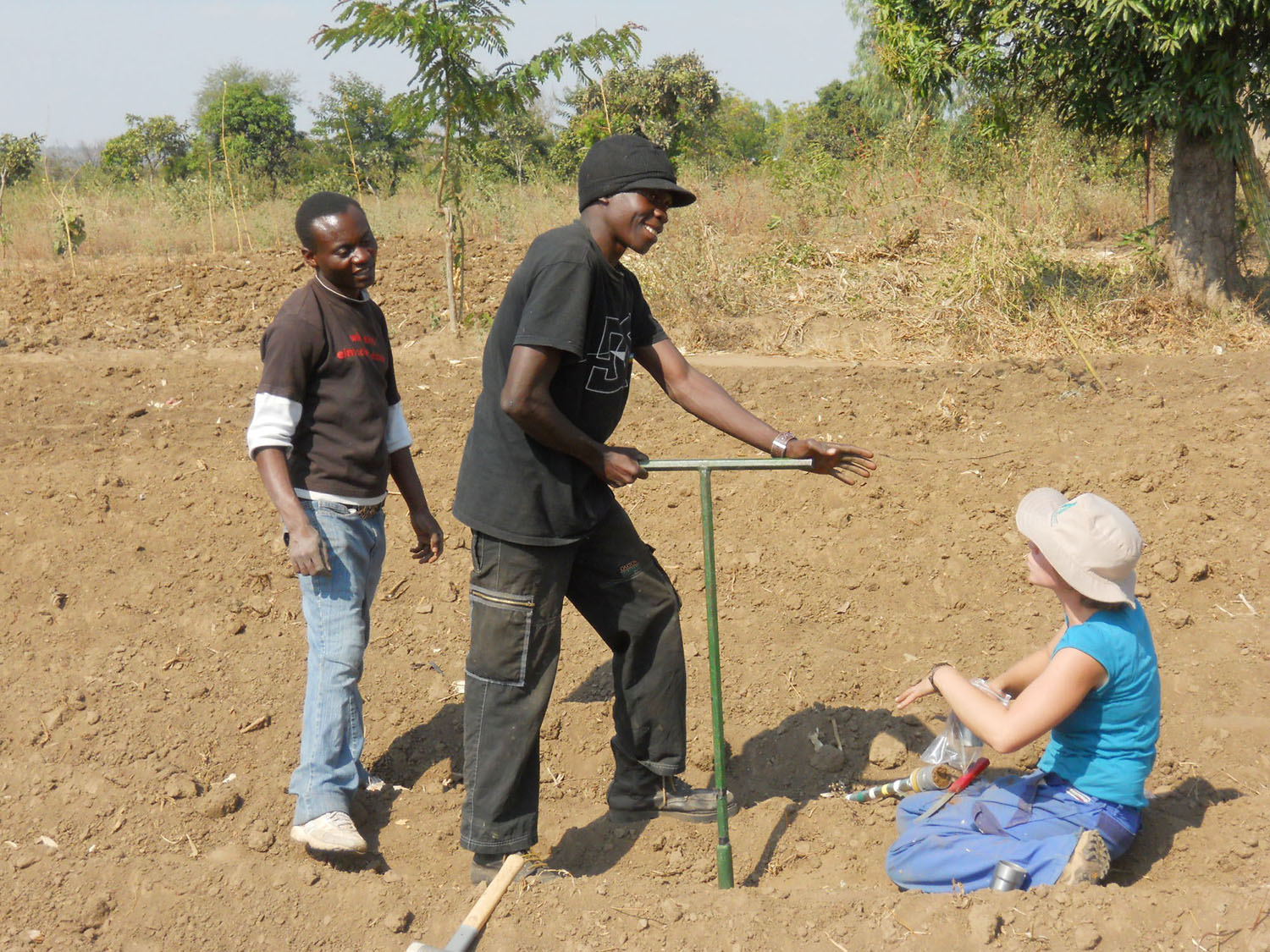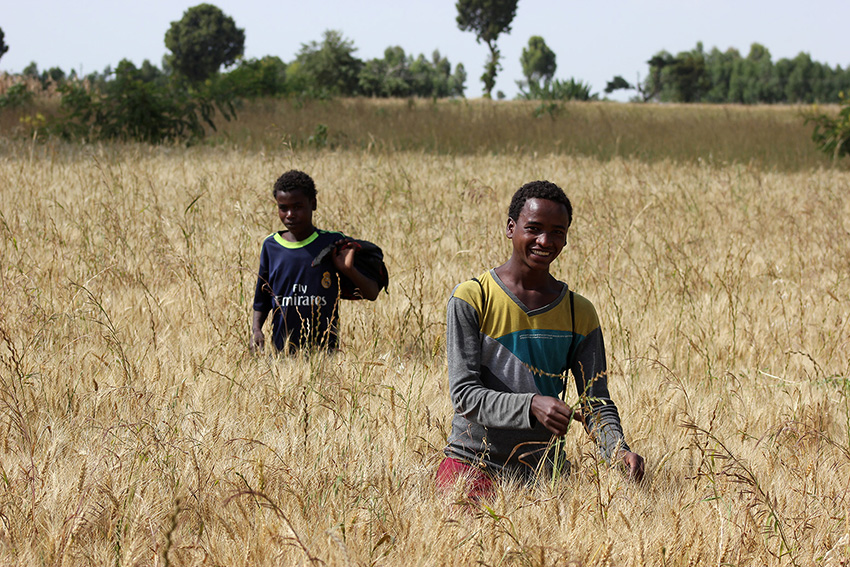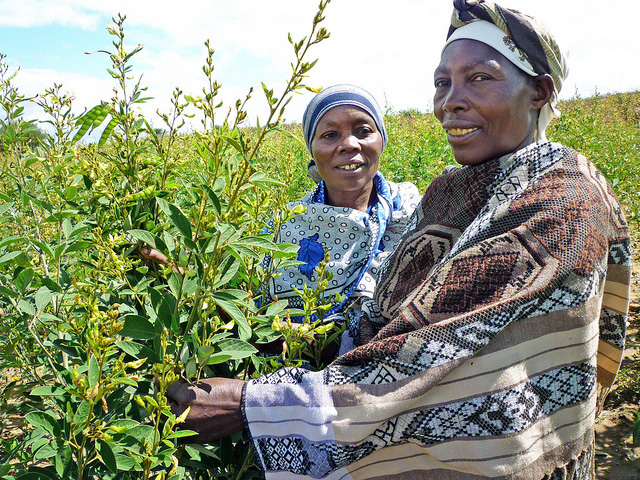Bolivia’s National Agricultural, Livestock and Forestry Innovation Institute (INIAF) and the CIMMYT-Colombia office organized the XXI Latin American Maize Meeting (XXIRLM) held in Santa Cruz de la Sierra, Bolivia, on 29-31 October 2015.
The meeting was organized within the agricultural innovation framework around four themes: genetic resources and biotechnology, genetic improvement, special and biofortified maize, and climate change and sustainable agricultural intensification. An expert gave a lecture on each one of the themes, followed by presentations by representatives of the participating institutions, which were reinforced by previously selected posters.
Bolivia has 11 million inhabitants and is self-sufficient in maize, producing 1.1 million tons on 430,000 ha each year. However, maize production could increase sustainably through the use of technologies such as improved seed and adequate crop management practices, including crop rotations (for example, with soybean on the 1.2 million ha sown to this crop). The goal of the XXIRLM was to discuss these and other subjects.
Johnny Cordero, Vice Minister of Rural Development and Lands, opened the meeting, which was attended by Carlos Osinaga, INIAF Director General, and Tito Claure, Coordinator of INIAF’s Maize Program. Juan Rissi, IICA representative in Bolivia, gave the first talk and said that in this age of productivity and competition, innovation is at the core of the agricultural sector’s tasks. Countries should therefore significantly increase their investment in research and development, strengthen the INIAs, and develop regional integration mechanisms to include INIAs, universities, research centers, the private sector, and farmer associations.
In the area of genetic resources, Terrance Molnar, CIMMYT, said that CIMMYT holds the world’s largest collection of maize genetic resources, with more than 27,000 accessions, whose potential is currently being assessed through the Seeds of Discovery project with the aim of providing genetic resources, knowledge, and tools that maize networks can use to accelerate the development of improved varieties that tolerate climate change and contribute to food security and sustainability. Four key objectives now being targeted are: drought tolerance, resistance to tar spot (Phyllachora maydis), resistance to maize lethal necrosis, and developing blue maize germplasm. Álvaro Otondo, INIAF Bolivia, mentioned that the area comprising northwestern Argentina and southwestern Bolivia has been proposed as a possible center of origin of maize based on ceramic artifacts found there that date from 7500-6200 BC.
Researchers at La Molina University evaluated 335 highland maize accessions from Peru’s central highlands and classified them into 22 races. The criteria that best differentiated these accessions were related to the crop’s vegetative stage and yield components. Researchers at CIF Pairumani, Bolivia, talked about the valuable experience they’ve had educating young students on genetic resource conservation using storytelling and the game of dominoes.
Ricardo Sevilla from La Molina University, Peru, proposed forming bulks of maize races using native germplasm and, when necessary, introductions. These bulks are later improved using recurrent selection to increase the frequency of favorable alleles of genes conferring adaptive traits, which are usually present in low numbers in native varieties. Selection gains of 5-10% have been achieved using this approach, depending on the selection criteria and the method used (half sibs, full sibs, self-pollinated families). In the area of biotechnology, researchers from the Universidad Mayor de San Simón and CIF Pairumani indicated they’re using new tools such as molecular markers, genomics, and another culture to develop haploids of some maize populations.
Luis Narro from CIMMYT and Sidney Parentony from EMBRAPA reviewed the history of maize breeding and came to the conclusion that breeding methods should exploit heterosis through the development of simple hybrids whose seed should be accessible to farmers at the right time, in places where they are needed, at a fair price. Hybrid seed use varies greatly in South American countries where double, triple, and simple hybrids are sown. For example, the area sown to hybrid seed covers more than 90% of the maize area in Argentina and Venezuela, 80% in Bolivia, and less than 50% in Colombia.
In Andean countries such as Bolivia, Ecuador, and Peru, farmers plant hybrid seed only of tropical maize (called hard yellow maize) (its use is above 80%). As for the Andean highland maize that is sown at altitudes above 2500 masl, the area sown to hybrid maize is zero, since all of the area is sown to open-pollinated varieties.
The convenience of using new technologies such as molecular markers, genomics, and doubled haploids to accelerate breeding progress was discussed. Molecular markers, genomics, and doubled haploids are being implemented in Argentina and Brazil, and doubled haploids are being produced in Chile. Other countries in the region such as Bolivia and Ecuador are interested in these technologies and have working agreements with CIMMYT.
Talks on genetic improvement were given by representatives from Bolivia, Colombia, and Ecuador, who said that new yellow maize hybrids with at least one CIMMYT parent have been released in their countries. In the case of Andean highland maize, ongoing work in Bolivia aims to increase maize productivity and incorporate resistance to ear rot into “cusco” type maize.
In the area of special and biofortified maize, CIMMYT researchers Félix San Vicente and Aldo Rosales highlighted the importance of maize varieties that are biofortified with provitamin A and high zinc content. They also reported CIMMYT’s progress in developing and releasing germplasm with high zinc, provitamin A, lysine, and tryptophan contents. They stressed the need to avoid grain losses due to poor storage and maintain the quality of products made from biofortified maize until they reach the consumer. High protein quality hybrids have been released in Bolivia and Ecuador in the past two years, and INTA Argentina is studying the nutritional quality of local maize.
In the area of special maize, representatives from Bolivia, Ecuador, and Peru presented their work on “purple maize,” a type of maize with high anthocyanin content in the grain, cob, and stalk, whose nutraceutical properties are due to powerful antioxidants that help control obesity, diabetes, and high blood pressure, as well as prevent colon cancer and other diseases. Consumption of soft drinks, cookies, and desserts made from this type of maize has increased greatly in countries such as Peru. This type of maize is only grown by smallholder farmers; therefore, linking the purple maize production system to the food industry would be an excellent means of improving the livelihoods of thousands of smallholder farmers who live in the poorest areas where this and other types of special maize are sown.
In the area of climate change and sustainable agricultural intensification, Kai Sonder from CIMMYT described changes in the weather at both the global and regional levels and highlighted the need to develop new varieties that tolerate multiple biotic and abiotic stresses. He also said it is necessary to set up networks that include germplasm evaluation and crop management practices adapted to farmers’ work environments and social conditions and promote sustainable agriculture, including precision agriculture, which means doing the right thing in the right place at the right time. Researchers from INTA Argentina and INIA Peru provided information on conservation agriculture and emphasized pest control, mechanization based on farm size and the type of crop, and recommendations on post-harvest management of maize grain. Argemiro Moreno did a field demonstration of the benefits of using the GreenSeeker to make more efficient use of nitrogen.
During the XXIRLM, replicas of an ear of maize of the “cusco” type were presented to outstanding maize researchers such as Gonzalo Ávila and Tito Claure from Bolivia, and Ricardo Sevilla from Peru. Finally, José Luis Zambrano, INIAP Ecuador, announced that the XXIIRLM will be held next year in Ecuador. The XXRLM was held last year in Lima, Peru.
The meeting was attended by representatives of national and international seed companies, NGOs, local governments, an agricultural bank, Bolivian universities such as Francisco Xavier University in Chuquisaca, Gabriel René Moreno de Santa Cruz University, Universidad Mayor de San Simón in Cochabamba, Peru’s La Molina National Agricultural University, national research centers such as INTA-Argentina, INIAF-Bolivia, EMBRAPA-Brazil, CORPOICA-Colombia, INIAP-Ecuador, INIA-Peru, and international research organizations such as IICA, JAICA from Japan, KOPIA from Korea, CIAT, and CIMMYT.
